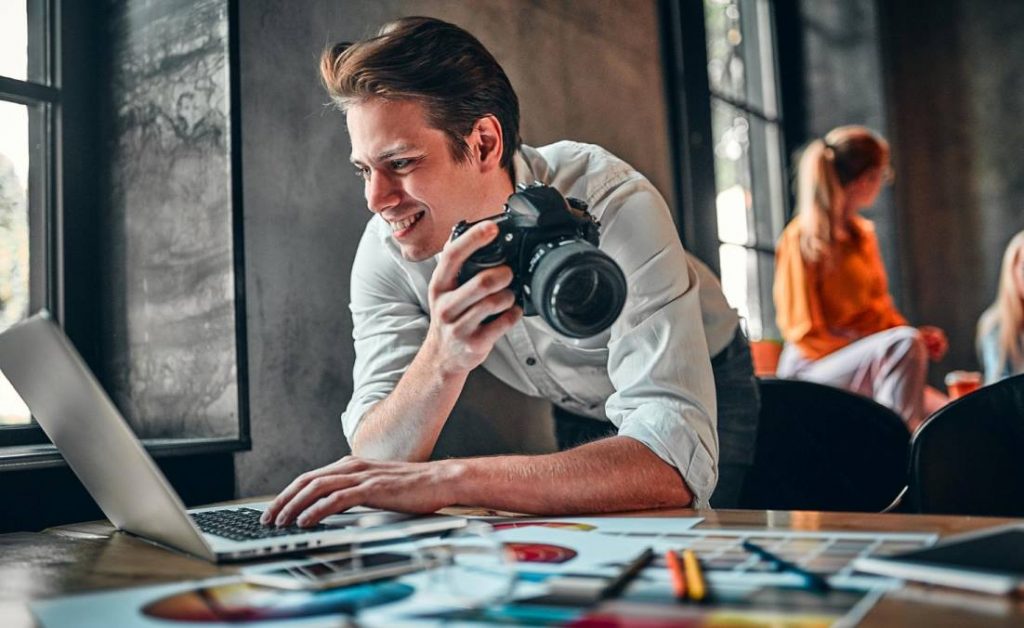
Whenever you see a unique and creative photo, you probably ask yourself how photographers get that specific shot. Nowadays, with smartphones, anyone can create a great image with filters; however, some photographers take the extra mile in their work to get the best results. Some examples of pictures that make us wonder, “How did they do that?!” are:
You might think that these are only achieved through Photoshop. The truth is, some photographers today still believe that you can get the best results when you use your creativity rather than an editing program. This physical hard work often pays off and even makes the pictures more unique and memorable. Thankfully, there are plenty of photographers online willing to share their secrets!
Here’s a list of behind-the-scenes pictures that show how some photographers achieved their most creative shots:
This is a perfect example of food photography meeting art. This picture was created by Sam Kaplan for Boston Magazine’s Burger Bonanza, a guide to the city’s best burger eats. Sam crafted this set-up by layering a set of glass plates on a rod for each ingredient of the burger. Then, an assistant arranged each layer one by one, which included expertly putting the sauce on the top bun so that it didn’t spill over to the bottom.
This picture was taken by Phoebe Rudomino for a Johnson & Johnson commercial. According to Saatchi Gallery, Phoebe is a ‘commercial diver and underwater photographer based at the Underwater Stage at Pinewood Studios, the only facility of its kind in the world. She specializes in behind-the-scenes underwater stills and videos for feature films, TV, and commercials.’ Breathtaking!
Matthew Albanese is a photographer who likes to use simple materials to create life-like landscapes. In his series called ‘Strange World,’ Matthew built individual models using all kinds of objects that only a creative mind could combine to produce a breathtaking landscape. For this picture, titled Aurora Borealis, Matthew shot a beam of light against a black curtain to get the edge effect, and for the stars, he simply shone strobe lights through holes in a corkboard.
Here’s another one of Matthew Albanese’s landscapes. In this ominous shot, the talented photographer used forced perspective to create the illusion of depth of field. This particular tornado might look menacing and destructive, but it’s actually made of the softest materials: wool, cotton, ground parsley, and moss.
Apparently, there’s no landscape too difficult to imagine as a miniature model for Matthew Albanese. In this volcanic explosion titled ‘Breaking Point,’ Matthew used tile grout, cotton, and phosphorous ink and then superimposed an image of fireworks during the editing process. The inside of the model was illuminated using a set of 6-60-watt light bulbs.
But for some professional photographers, not even a fiery landscape is out of bounds. Kawika Singson, an extreme hiker and landscape photographer from Hawaii, actually stood on lava until his tripod and running shoes caught fire. According to Singson, there was ‘only a thin layer of solid rock on top of the magma’ where he stood while taking the picture.
Flickr user ‘Patrick’ created this mind-boggling photo using an ingenious set-up. He used a sheet of glass with water droplets on it and placed it above a bowl of M&Ms. The result was a dizzying effect of hundreds of floating orbs of color.
Here’s another brilliant example of forced perspective, this time by self-taught photographer Michael Paul Smith. For his vintage pictures of an all-American street, he positioned a card table throughout a number of scenic Boston locations and placed the car models on top. Then, using a point-and-shoot camera and simple natural light, he captured the meticulously built scene. It’s like something out of a high-budget Hollywood film!
There’s something dramatic and awe-inspiring about underwater photoshoots. For his photo shoot using the Indonesian Tulamben Shipwreck as a backdrop, photographer Benjamin Von Wong had to overcome a number of challenges. Starting with the location, he was told that he could not come into contact with the coral reef that formed around the shipwreck. Then there was the lighting, which according to Wong, ‘the deeper you get, the more desaturated everything gets.’ Using some editing magic, Wong achieved a final shot that was worth the deep dive.
Alex Koloskov isn’t afraid of taking risks. In fact, he believes that any picture can be achieved as long as you ‘protect your gear.’ That was the case for this photoshoot of roses surrounded by splashing water. He began by covering the studio and lights with clear plastic to avoid water damage. Then, using a high-speed shutter setting and a smart trigger, he captured the action at the perfect time.
This still from David Attenborough’s Conquest of the Skies shows two hummingbirds from the cloud forests of Ecuador. According to the behind-the-scenes episode of the special, the team used a LoveHighSpeed camera that captures 4K footage at an impressive 930 frames per second.
Chris Chambers, a photographer from England, isn’t afraid to get dirty to capture the perfect timeless wedding shot. In an interview with The Independent, he explains that ‘laying in puddles, wading into lakes and generally shooting in undesirable locations’ are all part of the job. He admits that after spending a long time relying on Photoshop, he decided to include more regular photography in his work.